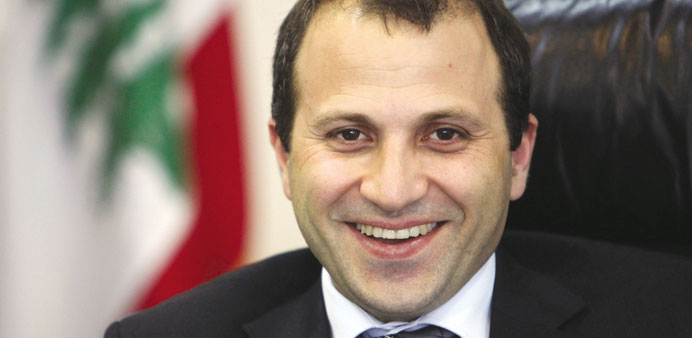Bassil: production could begin within four years.
AFP/Beirut
Preliminary surveys of Lebanese offshore fields show reserves of 30tn cubic feet of natural gas and 660mn barrels of oil, Lebanon’s energy minister said, adding that production could begin within four years.
Speaking at the Arab Economic Forum, Gebrane Bassil said scanning was now complete on 70% of the country’s territorial waters — an area of some 15,000 square kilometres (5,791 square miles).
“In just 10% of that area... we have 30tn cubic feet (850mn cubic meters) of gas and 660mn barrels of oil,” he said.
Speaking to AFP, Bassil said the amounts were “very large and promising as initial estimates.”
Production from the reserves was linked to the speed of the exploration phases and installation of wells, but “theoretically ranges from three to seven years.”
“If we meet all the deadlines, we hope to have completed the first exploration phase in the period between 2016 and 2017 and to begin thereafter development and production,” he added.
Last month, Bassil announced the name of 46 firms that had qualified to bid on a first round of licenses to explore Lebanon’s offshore fields, with 12 qualified to bid as operators.
The bidding round opened on May 2 and is scheduled to be completed by November 4.
The process has been complicated by Lebanon’s fragile political climate, with a caretaker government currently in charge, as Tammam Salam tries to form a consensus cabinet.
In January, Bassil said Lebanon hoped to have exploration contracts with international oil companies signed and sealed by the end of the year.
He has played down the risk of conflict with Israel over the potential reserves, despite a longstanding dispute over the maritime boundary between the two neighbors, which remain technically in a state of war.
In August, parliament passed a law setting Lebanon’s maritime boundary and an exclusive economic zone.
But Lebanon has submitted to the UN a maritime map that conflicts significantly with one proposed by Israel, arguing that its map is in line with an armistice accord drawn up in 1949, an agreement not contested by Israel.
The disputed zone consists of about 854 square kilometers (330 square miles), and suspected energy reserves there could generate billions of dollars.
Lebanon has been slow to exploit its maritime resources compared with other eastern Mediterranean countries, with Israel, Cyprus and Turkey much further along in the process of drilling for oil and gas.



